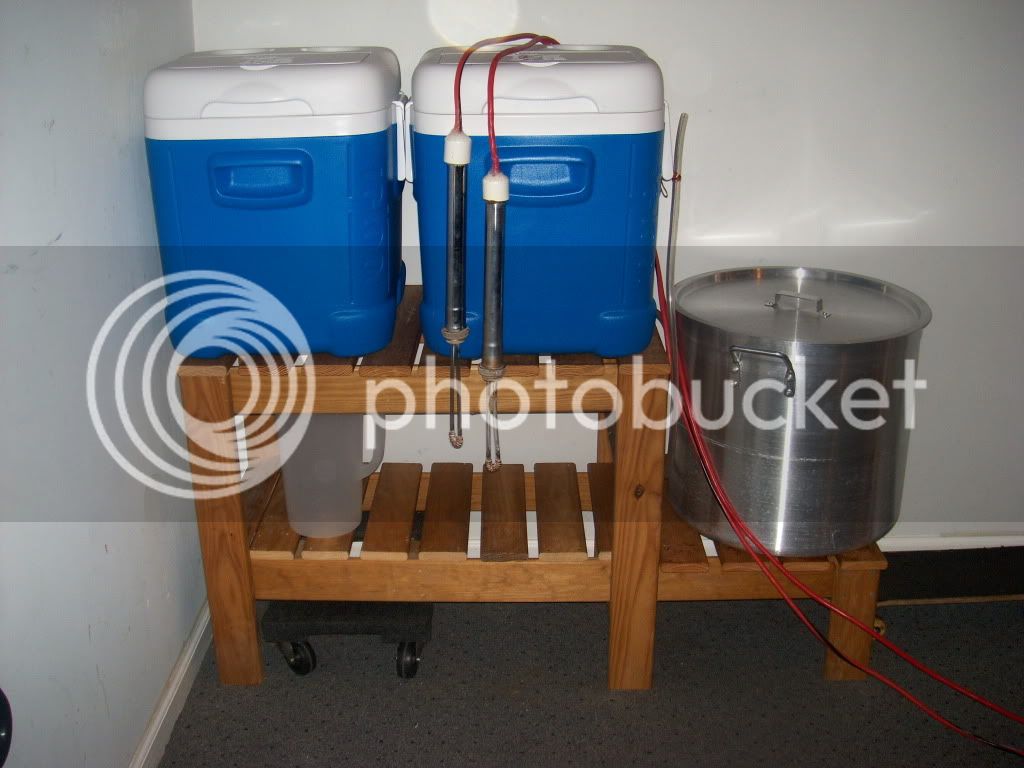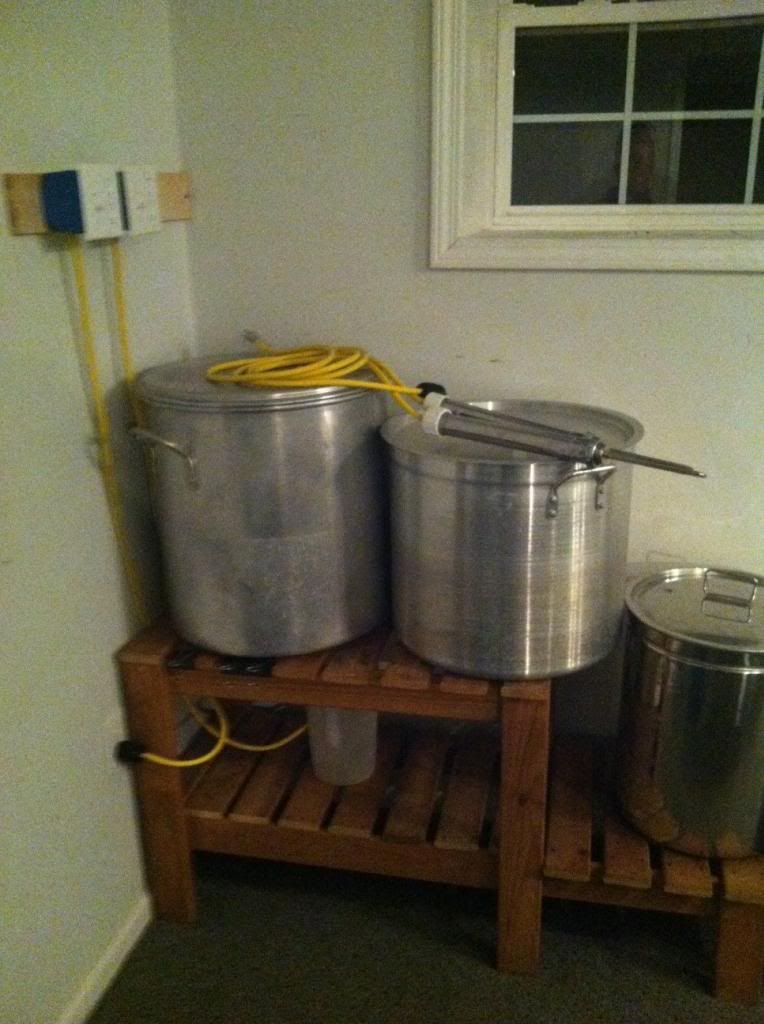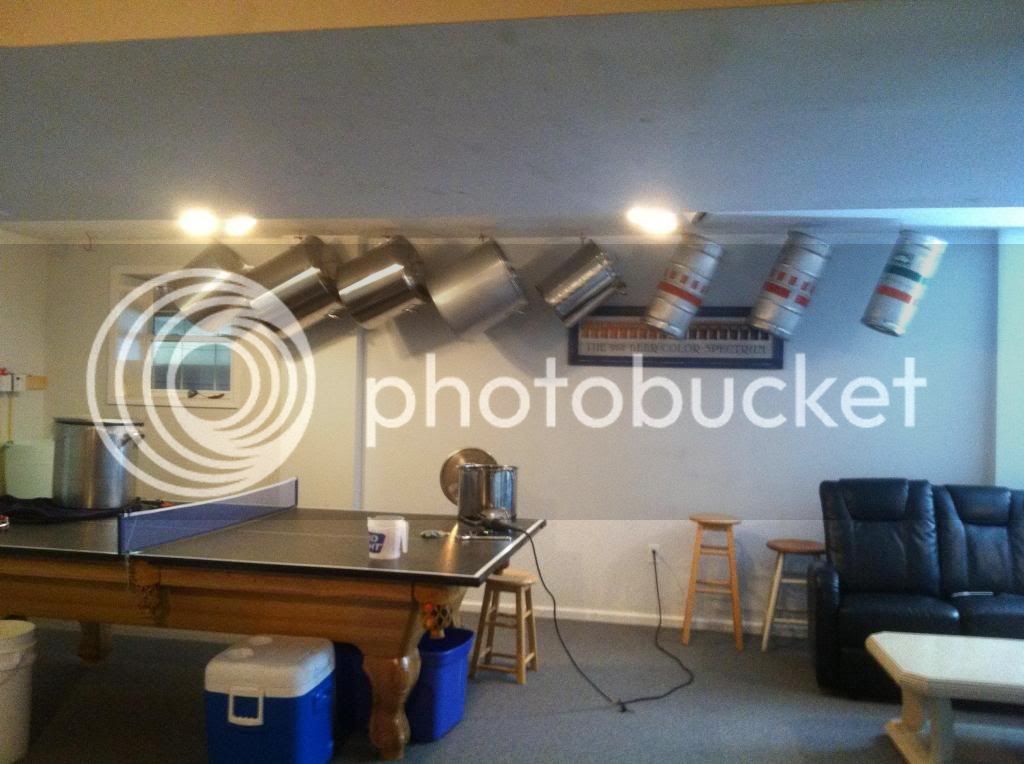Do you electric brew? What can you tell me about it? Equipment and boil sizes?
I have been basement brewing for years using two 120v 20 amp GFI circuits powering two 2000w elements, with no controller, just switches to power the elements on and off. By today's standards, I will admit it is very ghetto. When I started E-brewing, there was not much info available, so you just "kinda figured it out". I have the skills and means to build a more sophisticated system, but I guess we are creatures of habit, and the simple ghetto system works well, so I guess if it ain't broke, I haven't fixed it.
I brew either BIAB, or batch sparge using a cooler MLT with a simple stainless braid / no bulkhead valve for lautering.
https://www.homebrewtalk.com/f11/ten-minute-cooler-mash-tun-conversion-125108/
My cooler or kettle HLT when batching, doesn't even have a bulkhead drain, I just prefer to transfer sparge water with a gallon pitcher, easier and faster IME. My kettles don't have valves, I just siphon the wort or fermented beer with a racking cane and tubing...it works fine, I keep it very simple.
For ventilation, I just stick an old fan in the basement window that is behind my kettle. It works fine, I do also run the fan for 20-30 minutes after flame out to air out the basement, as it falls behind a little bit during the boil, not a big deal.
Typically I brew 1/4 keg, 7.75 gallon batches, and 4000w heats and boils quickly. On occasion I brew larger batches, and have done several 1/2 keg 15.5 gallon batches, which is a stretch, but it works with a little patience. The sweet spot for wattage, seems to be about 3000w (2 elements @ 1500) for 5 gallon batches, and 4000w (2 elements @ 2000w) for 10 gallon batches. Use a large ketttle, double batch size is preferred since you can't simply dial down the boil without a controller...not a deal breaker IME...elements are only 10 bucks, find the power that suits your needs and run it. Of course, a 240v, 5500w element on a spa panel GFI with controller is superior, but not required,
only my opinion and what works for me.
Just my opinion, but even a simple electric indoor system beats propane outside, brewing in comfort where you are going to ferment is so much easier, again, only my opinion.
IME, even a single 2000w element will handle 3-4 gallon batches, and squeek by for 5 gallon batches with an insulated 8-10 gallon kettle.
Check out the electric brewing section, again only my opinion, but don't get overwhelmed thinking you NEED to spend thousands of dollars. You can install 120v elements, or build a heat stick for 30-50 bucks each.
My ghetto basement brewery
note the "pump" on the bottom shelf for moving sparge water, and furniture dolly for moving kegs.

Installed / relocated 2, 20 amp gfci outlets with switches closer to the brew stand

My kettle addiction, actually one more 20 gallon stainless is AWOL at my hunt club. Smallest hanging is a B/C 11 gal., largest is 24 gallon SS.








